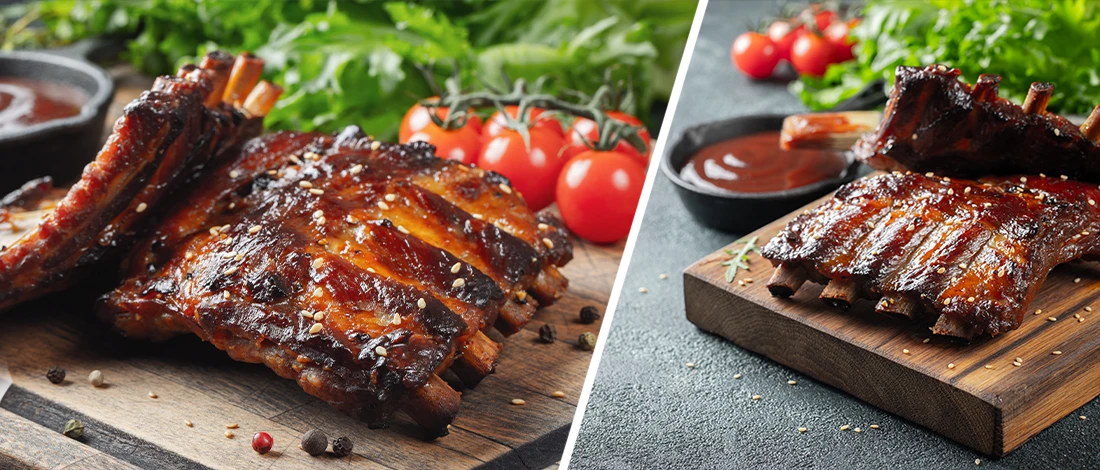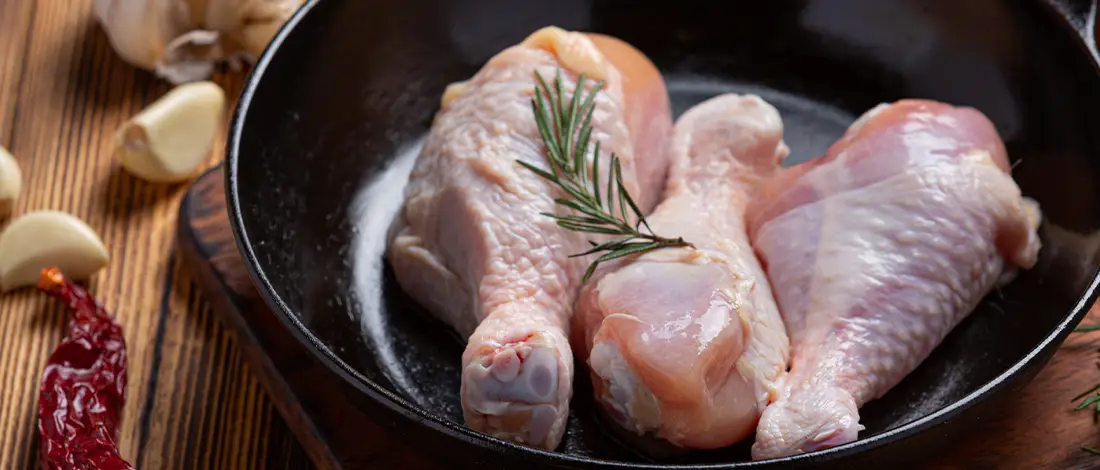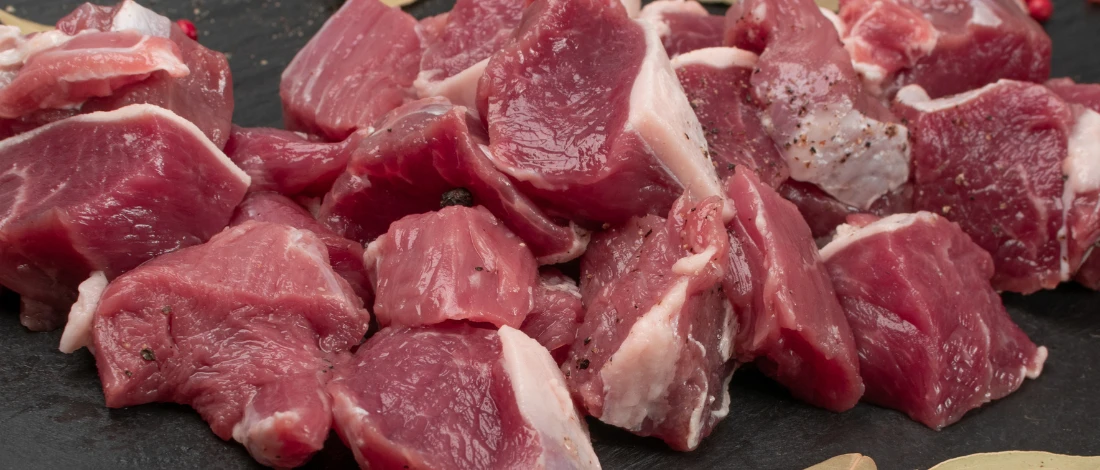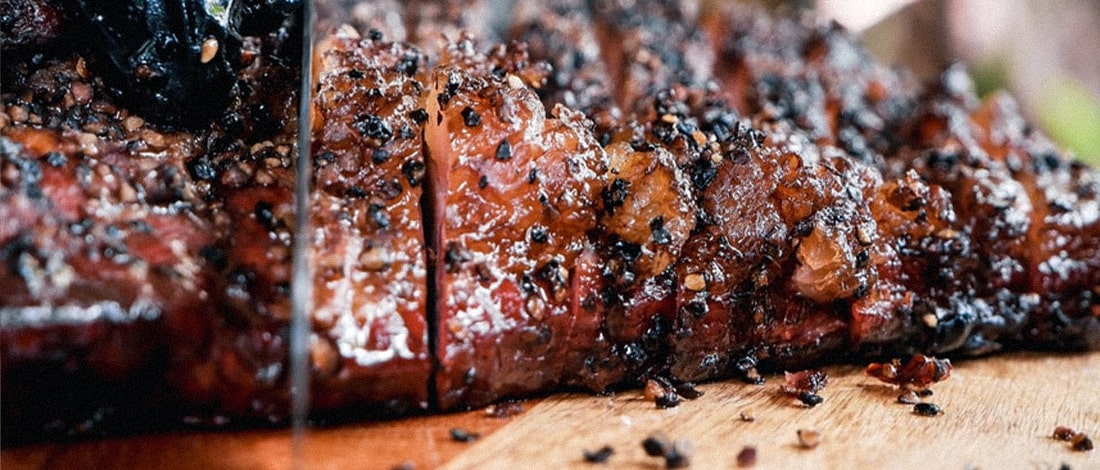If you're a dedicated meat lover like me, then you know how difficult it can be not knowing how long to let your delicious steak rest before slicing.
Thankfully, I spent hours researching the science behind meat resting and how to do it properly. I'll summarize all my findings in this post.
Let's get started.
Quick Summary
- The ideal resting time for meat ranges between ten to twenty-five minutes, depending on the size of the meat.
- Resting meat slightly covered helps to retain more moisture and prevent excess carryover cooking.
- Cooking meat stiffens the muscle fibers, which will then loosen up during rest.
How Long Should Meat Rest?
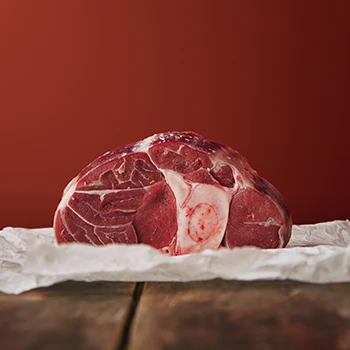
Meat should rest for 10-25 minutes, depending on the size of the cuts. Smaller meat chunks will take a shorter time, and vice versa for bigger cuts of meat.
Resting meat is letting cooked meat sit for a while, away from the heat source, before slicing it and serving.
I use this technique while preparing medium-rare meat to preserve moisture and taste and prevent the meat from overcooking.
During the cooking process, the heat causes the protein and meat fibers to constrict, driving the flesh's fluids to the center of the meat [1].
And then, when you rest steaks, the flesh becomes more soft and juicy because the muscle fibers have a chance to relax, and the fluids redistribute evenly.
Giving your perfect steak some time to rest on the cutting board may reduce the amount of meat juice lost when you cut into the flesh.
As a result, your rested barbecue yields a soft, flavorful, and exceptionally juicy bite.
Related Articles:
The Importance of Resting Meat

Let's explore the importance of letting that steak rest for a while before slicing.
Moisture Reabsorption
As meat cooks, water is forced out, and muscle fibers begin to stiffen up. Some moisture eventually evaporates as it spreads outward toward the meat's surface.
After removing it from the oven, I recommend resting it so that the remaining liquid in the roast has time to circulate back into the meat.
If you decide to slice your chicken breasts right away, the liquid will pool out, leaving your delicious roast with a fairly dry texture. But if you rest it for a few minutes, your rested steak will be soft and juicy since the moisture is reabsorbed.
Carry Over Cooking
Resting helps the heat spread evenly throughout big portions of meat like pork shoulder and roasts.
When roasting, the outside heats up more quickly than the center of the steak, and resting will allow this heat to penetrate the meat long after it has been removed from the oven. This process of "carryover" cooking will occur while the meat rests, resulting in a perfectly done roast.
Once the internal cooking temperature reaches its optimum, remove from the heat. Then swaddle the meat with aluminum foil (to keep the meat warm) and rest it for a couple of minutes.
Guidelines For Resting Meat
Here are quick guidelines you can follow when resting meat:
- Give it at least 10 minutes if you know your cut is thick.
- If you're pressed for time, five to seven minutes should do.
- For every pound, you may give it a 10-minute rest.
- For each inch of thickness, you may give it a 5-minute rest.
- Sometimes you can rest the meat for only half the time it took to cook it.
I advise purchasing a meat resting board, which is basically a cutting board with a wire rack on top. It enables air to flow, which efficiently controls the internal temperature range.
However, if you can't get your hands on this, you are welcome to use a warm plate.
Covered vs. Uncovered

The amount of time for resting steaks affects the amount of cooking carried over.
If you leave your beef uncovered after taking it out of the hot pan or directly place a hot steak on a cold surface, more heat will travel into the room, and less heat will reach the meat's core.
The meat may get cold before serving if too much heat flows out.
"Strive to rest your meat covered in a Cambro or a warm oven, allowing it to stay warm without drying out."
- Jeff Savel, Meat Science Professor
If you tightly cover your prime rib meat and let it sit in a low oven or under a heat lamp, there will be more heat increase, and you risk overcooking the streak because of the excess carryover cooking effect.
If you’re smoking meat, I recommend tenting the meat with aluminum foil to preserve the heat while still allowing sufficient air circulation to avoid scorching the flesh's surface.
This will give you a succulent and juicy steak. If you want a crispy exterior on your whole chicken or turkey, rest it covered in a heated oven with the heat turned off.
What Happens When You Don't Rest Meat After Cooking?
When you don't rest steak after cooking, you risk overcooking it or serving a dry and tough piece of meat.
If you don't let the steak rest, it will lose more of its tasty fluids when you slice it.
You should take your meat out of the oven or grill once it reaches the desired doneness based on smoking times temperature.
Also, because resting helps the fluids to redistribute, the juices will flow away if you skip the step, leaving you with a dry chunk of brown, overdone meat.
FAQs
Can You Let Meat Rest For Too Long?
No, you cannot let meat rest for too long because it'll get cold and risk bacteria growth.
Should Meat Rest Covered or Uncovered?
Meat should rest covered as this allows free heat circulation throughout the meat and keeps the juices from evaporating.
Does Meat Keep Cooking While Resting?
Yes, the meat keeps cooking while resting. This process is called carryover cooking and happens because of the internal heat of the meat. Ensure you cover your resting steak lightly so that air circulates through and prevent excess carryover cooking.
Does Resting Steak Make It Cold?
No, resting steak doesn't make it cold if you rest it covered in a warm place. But if you leave your meat to sit out on a cold surface uncovered, then it's bound to get cold.
Reference:
- https://pubmed.ncbi.nlm.nih.gov/22063748/


